March 2013 | VOL. 12, NO. 3 | www.McGowan.pitt.edu
McGowan Institute for Regenerative Medicine – Annual Scientific Retreat
 The McGowan Institute for Regenerative Medicine held its 2013 Scientific Retreat March 7-10, 2013. The focus was on peer-to-peer networking, and the retreat provided many opportunities to explore collaborative endeavors with other researchers, participating guests, and external partners who are working to bring regenerative medicine technologies to clinical use.
The McGowan Institute for Regenerative Medicine held its 2013 Scientific Retreat March 7-10, 2013. The focus was on peer-to-peer networking, and the retreat provided many opportunities to explore collaborative endeavors with other researchers, participating guests, and external partners who are working to bring regenerative medicine technologies to clinical use.
The participation and contributions of the guests and external collaborators – along with McGowan Institute for Regenerative Medicine affiliated faculty and trainees – provided for insightful discussions and identification of opportunities for partnership. This year’s program was chaired by Kacey Marra, PhD, associate professor in the Departments of Plastic Surgery (primary) and Bioengineering (secondary), as well as co-director of the Adipose Stem Cell Center at the University of Pittsburgh.
Program Highlights:
The retreat program included special presentations by the following guests:
- McGowan Distinguished Lecture “Mesenchymal Stem Cells for Treatment of Graft-versus-Host Disease” by Katarina Le Blanc, MD, PhD, Professor of Clinical Stem Cell Research, Department of Laboratory Medicine, Karolinska Institutet, Sweden
- Steven D. Shapiro, MD, Executive Vice President, UPMC, Chief Medical and Scientific Officer, President, Physician Services Division-UPMC who spoke on “Health Care Reform is Here: Daunting Challenges and Great Opportunities”
- Highlights of emerging clinical therapies introduced by J. Peter Rubin, MD and Jörg Gerlach, MD, PhD.
The Retreat program also included a great cross-section of scientific presentations given by these invited researchers from other institutions and agencies (in alphabetical order):
- Steven Boyce, PhD, University of Cincinnati, Professor, Department of Surgery, College of Medicine, Adjunct Professor, Department of Biomedical Engineering, College of Engineering, Senior Investigator, Research Department Shriners Burns Hospital: “Considerations for Automated Fabrication of Tissue-Engineered Skin Substitutes”
- Carmelo Chisari, PhD, Unit of Neurorehabilitation, Department of Neuroscience, University of Pisa, Italy: “Chronic Muscle Stimulation in Myotonic Dystrophy Type 1: Possible Effect on Pathogenetic Mechanisms”
- Peter DeComo, Chairman and Chief Executive Officer, ALung Technologies: “Keynote on Entrepreneurial and Commercialization Journey”
- Artur Dubrawski, PhD, Sr Systems Scientist/Adj Professor MISM, Robotics Institute, Carnegie Mellon University: “Machine Learning Approach to Model Physiologic Data Streams”
- Lisa Fortier, DVM, PhD, Associate Professor of Large Animal Surgery, Cornell University: “Biologics for Regenerative Medicine”
- Nick Jeffery, BVSc, PhD, Diplomate ECVS, ECVN, SAS, FRCVS, Professor, Neurology & Neurosurgery, Veterinary Clinical Sciences, Iowa State University: “Blinded Randomized Controlled Trial of Olfactory Ensheathing Cells for Clinical Canine Spinal Cord Injury”
- David H. Kohn, PhD, Professor, Departments of Biologic and Materials Sciences, and Biomedical Engineering, University of Michigan School of Dentistry: “Biomineralization Principles as a Platform for Tissue Regeneration”
- Bruce Ksander, PhD, Associate Scientist, Schepens Eye Research Institute, and Associate Professor, Harvard Medical School: “A novel gene that identifies limbal stem cells for corneal regeneration”
- J. Randall Moorman, MD, Professor of Medicine, Biomedical Engineering and Molecular Physiology and Biological Physics, University of Virginia: “Mortality Reduction by Heart Rate Characteristic Monitoring in Very Low Birth Weight Neonates: A randomized trial”
- Scott L. Nyberg, MD, PhD, Professor of Surgery, Artificial Liver Program Director, Mayo Clinic: “Humanized Spheroid Reservoir Bioartificial Liver”
- Rachelle Palchesko, PhD, OTERO Fellow-Laboratory of Adam Feinberg, PhD, Carnegie Mellon University: “Bioengineering the Corneal Endothelium”
- Glenn Prestwich, PhD, Presidential Professor of Medicinal Chemistry and Research Professor of Biochemistry, University of Utah: “From Goo to Great”
- Jessica Quimby, DVM, Department of Clinical Sciences, Colorado State University: “Mesenchymal Stem Cell Clinical Trials for Feline Chronic Kidney Disease”
- David S. Smith, JD of Counsel, Pepper Hamilton, LLP: “Careers in the Law – More than Patent Prosecution”
- Mark E. Sobel, MD, PhD, Executive Officer, American Society for Investigative Pathology, International Society for Biological and Environmental Repositories, Intersociety Council for Pathology Information: “Career Opportunities in Professional Societies, Journals, and Public Policy Sector”
- Marjana Tomic-Canic ,RN, PhD, Professor of Dermatology, University of Miami Miller School of Medicine: “Approaches to Restore Wound Healing in Chronic Wounds”
- Elizabeth R. Unger, PhD, MD, Chief, Chronic Viral Disease Branch, Centers for Disease Control and Prevention, President, American Society for Investigative Pathology: “Career Opportunities at the Centers for Disease Control”
Elevator Pitch Competition
Again this year, the University of Pittsburgh, Office of Enterprise Development (OED) hosted the “Innovator Elevator Pitch.” This event consisted of a series of scheduled brief presentations from participating students on the value of their technology to an audience which included industry participants and venture capitalists. Pictured along with Andrew Remes, PhD, associate director of the OED, are this year’s winners:
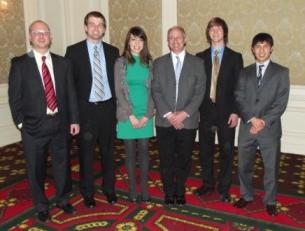 1st: Katie Farraro
1st: Katie Farraro
“A Magnesium-Based Ring for Repair of an Injured Anterior Cruciate Ligament”- 2nd: Don Taylor and Austin Nuschke
“Cellular Bio-bandage for Traumatic and Chronic Wound Injury” - 3rd: Noah Johnson and Robert Allen
“RecoveryOne – Solution for a Broken Heart”
This event was a great opportunity to present the potential value of emerging technologies. The event was judged by the audience. The panel members, who provided feedback to each of the presenters, were:
- Pratap S. Khanwilkar, PhD, Professor, Bioengineering and Coulter Program Director
- Arpita Maiti, PhD, Senior Vice President of Research, North America, Vertex Pharmaceuticals, Inc.
The OED will make available $7,500 to the winner, Katie Farraro, to be spent on activities that further the technology presented toward commercialization and may include, for example, market assessment, prototype development, and animal testing. At the completion of the project the investigator will submit a report to the OED. At the end of the project the investigator will demonstrate how the award has been used to bring their technology closer to commercialization.
Poster Session
The poster session, which had more entries than any other Retreat, was effective in introducing the focus of the Retreat and interests of the faculty and the guests. Andrew Duncan, PhD, assistant professor in the Department of Pathology, Division of Experimental Pathology, University of Pittsburgh, and his committee organized the session and judged the posters. The winners (pictured below left to right) of the poster session were:
Medical Devices:
- Co-First: Anthony Finoli (Jorg Gerlach, PhD, MD, lab, University of Pittsburgh): “Design and Construction of a Human Bone Marrow Bioreactor: Positive-Negative Casting of a Ceramic Bioreactor Core for Culturing Human Liver Tissue”
 Co-First: Cassandra Weaver (Tracy Cui, PhD, lab, University of Pittsburgh): “Electrically controlled release of anti-inflammatory dexamethasone from conducting polymer/grapheme oxide nanocomposite films”
Co-First: Cassandra Weaver (Tracy Cui, PhD, lab, University of Pittsburgh): “Electrically controlled release of anti-inflammatory dexamethasone from conducting polymer/grapheme oxide nanocomposite films”
Computation and Modeling:
- First: William Kowalski (Kerem Pekkan lab, Carnegie Mellon University): “Computational hemodynamic optimization predicts dominant aortic arch selection is driven by embryonic outflow tract orientation in the chick embryo”
- Second: Callie Miller (Lance Davidson, PhD, lab, University of Pittsburgh): “Modeling F-Actin and non-muscle Myosin II morphologies” (not pictured)
Cellular therapy:
- First: Xiong Zhang (Tom Smithgall, PhD, lab, University of Pittsburgh): “The c-Yes tyrosine kinase is a potent suppressor of ES cell differentiation and antagonizes the action of its closest phylogenetic relative, c-Src”
- Co-Second: Francesca Nicholls (Michel Modo, PhD, lab, University of Pittsburgh): “The potential of CEST for independent in vivo tracking of transplant components”
- Co-Second: Julie Chandler (Eric Lagasse, PharmD, PhD, lab, University of Pittsburgh): “Two distinct stem cells in the human small and large intestine”
Tissue Engineering:
- First: Robert Allen (Yadong Wang, PhD, lab, University of Pittsburgh): “Long Term in vivo Study of Rapidly Degradable Synthetic Arterial Graft”
- Second: Da-Tren Chou (Prashant Kumta, PhD, lab, University of Pittsburgh): “In Vitro Evaluation of Inkjet 3D-Printed (3DP) Fe-Mn Biodegradable Metallic Scaffolds”
Winners of the door prizes were Rachelle Palchesko, Andrew Remes, and Eric Lagasse. Prizes were courtesy of Nemacolin Woodlands.
A special thank you is extended to all who made this year’s Retreat a success!
See the full Retreat Program here.
SCIENTIFIC ADVANCES
Regenerative Medicine Clinical Translation
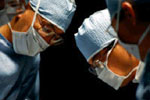 The Pittsburgh Tribune-Review recently highlighted two ongoing clinical trials featuring the technologies of McGowan Institute for Regenerative Medicine affiliated faculty members. As reported by author Luis Fabregas, “Scientists [all over the world] are working to build organs to replace those that have been damaged beyond repair. In recent years, tissue-engineered skin has been used to close gaping wounds, temporarily cover burns, and even treat foot ulcers in diabetics.” In Pittsburgh, projects at the McGowan Institute involve the use of a material called the extracellular matrix (ECM) to repair deformities in muscles and soft tissues caused by injury, disease, or wounds. Another research project uses fat-derived stem cells to repair facial defects after trauma and after a craniotomy, a cut that opens the skull to access the brain.
The Pittsburgh Tribune-Review recently highlighted two ongoing clinical trials featuring the technologies of McGowan Institute for Regenerative Medicine affiliated faculty members. As reported by author Luis Fabregas, “Scientists [all over the world] are working to build organs to replace those that have been damaged beyond repair. In recent years, tissue-engineered skin has been used to close gaping wounds, temporarily cover burns, and even treat foot ulcers in diabetics.” In Pittsburgh, projects at the McGowan Institute involve the use of a material called the extracellular matrix (ECM) to repair deformities in muscles and soft tissues caused by injury, disease, or wounds. Another research project uses fat-derived stem cells to repair facial defects after trauma and after a craniotomy, a cut that opens the skull to access the brain.
“We’re peeling back the complexities,” said William Wagner, PhD, director of the McGowan Institute for Regenerative Medicine, and a professor of surgery, chemical engineering, and bioengineering at the University of Pittsburgh. “We know a lot more than we did before about how cells behave. In very well-controlled systems, we can get these cells to do things that previously we weren’t able to do.”
Current treatment options for the loss of large masses of muscle tissue are limited. A regenerative medicine approach that could reconstitute functional muscle-tendon tissue, as well as associated nerves and blood vessels, would represent a paradigm shift in the treatment of traumatic tissue injury. The proposed approach of a study led by McGowan Institute deputy director Stephen Badylak, DVM, PhD, MD, professor in the Department of Surgery, and director of the Center for Pre-Clinical Tissue Engineering within the Institute, involves the use of an “off the shelf” biologic scaffold material that would replace the missing soft tissue, initiate a stem/progenitor cell recruitment process, and facilitate site appropriate functional tissue restoration.
The major focus of the Badylak Laboratory is the development of regenerative medicine strategies for tissue and organ replacement. The use of mammalian ECM or its derivatives as an inductive template for constructive remodeling of tissue is a common theme of most research activities. The goal of all projects is clinical translation and improved patient care.
In clinical trauma research, the U.S. Army’s Institute of Surgical Research (ISR) is examining a variety of combat casualty care problems in trauma patients. ISR is recognized worldwide for its contributions to improved trauma survival. In partnership with the ISR, Dr. Badylak’s ECM technology is used today to help heal soldier lost muscle tissue wounds.
Learn more about this trial involving muscle loss due to severe trauma here.
McGowan Institute for Regenerative Medicine faculty member J. Peter Rubin, MD, chair, Department of Plastic Surgery, director of the Center for Innovation in Restorative Medicine, UPMC Endowed Professor of Plastic Surgery, and professor of bioengineering, University of Pittsburgh, received a major funding award from the Department of Defense (DOD) to help wounded soldiers recover from devastating facial injuries using innovative surgical technologies based on the biology of fat tissue.
The research program involves the treatment of 20 injured soldiers with facial injuries. “As many as 26% of wounded soldiers suffer facial injuries, and these can have a great impact on quality of life. While we can reconstruct the bony structure fairly well, it is the surrounding soft tissues that give people the recognizable human form. This project investigates how soft tissue grafting can more precisely restore facial form and improve the lives of our wounded soldiers,” Dr. Rubin says.
The 1.6 million dollar funding award, known as The Biomedical Translational Initiative, is a program under the Office of the Assistant Secretary of Defense for Health Affairs. The program objective of The Biomedical Translational Initiative is to fund the demonstration and validation of innovative technologies to improve the clinical outcome of wounded military personnel.
“Fat grafting, or moving fat tissue from one part of the body to another, has been used as a cosmetic procedure for decades,” comments Dr. Rubin, “but we are now applying this technology for reconstructive surgery to accurately restore facial form after battlefield injuries.” The use of fat grafting for serious facial injuries, such as those resulting from roadside bombs, is facilitated in this project by specially designed devices and instruments for harvesting the fat tissue and implanting it into regions of scarred tissue.
Learn more about this project here.
First “Breathing Lung” Transplant on East Coast Using OCS Lung Performed
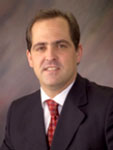 McGowan Institute for Regenerative Medicine faculty member Christian Bermudez, MD, UPMC’s chief of cardiothoracic transplantation and assistant professor of surgery at the University of Pittsburgh School of Medicine, is the principal investigator of a study where UPMC surgeons performed a “breathing lung” transplant using a portable machine that provides a constant supply of blood and nutrients to the donor organs during transport and assessment. Doctors say has the potential to keep them donor lungs healthier and viable for longer than ever before.
McGowan Institute for Regenerative Medicine faculty member Christian Bermudez, MD, UPMC’s chief of cardiothoracic transplantation and assistant professor of surgery at the University of Pittsburgh School of Medicine, is the principal investigator of a study where UPMC surgeons performed a “breathing lung” transplant using a portable machine that provides a constant supply of blood and nutrients to the donor organs during transport and assessment. Doctors say has the potential to keep them donor lungs healthier and viable for longer than ever before.
The double-lung transplant was performed at UPMC Presbyterian, using harvested lungs treated with the Organ Care System, also known as the OCS lung, produced by TransMedics Inc. This is the first time the device has been used on the East Coast. The patient, a 53-year-old man from Moundsville, W.Va., had suffered from pulmonary fibrosis and pulmonary hypertension. He was in good condition 2 days following the procedure.
Traditionally, donor lungs are cooled and put on ice with no blood circulation, a process that essentially puts them to sleep. Once removed from a blood supply, though, the lungs can deteriorate rapidly, which can lead to complications for the recipient or, in some cases, the determination that the organs are no longer viable. Using the OCS device, the lungs are immediately placed in the machine after donation, where they are kept at body temperature and functioning while in transit to the recipient.
“Unfortunately, many people waiting for an organ transplant die because usable donor organs aren’t available. Using this method, we believe we can help more people and save lives,” said Dr. Bermudez who participated in the transplant surgery along with surgeon Jonathan D’Cunha, MD.
UPMC surgeons hope to enroll 10 patients in the clinical trial, which will randomize 5 participants to get the OCS device and 5 to be treated using the traditional method of care. The goal is to assess whether perfusing the lungs in the machine will decrease the chances of early dysfunction of the transplanted organ, thus resulting in better long-term function for the recipient.
“This is an exciting technology breakthrough that has the potential to increase the organ donor pool and improve outcomes for those receiving these specially perfused lungs,” said McGowan Institute for Regenerative Medicine affiliated faculty member James Luketich, MD, chair of the Department of Cardiothoracic Surgery.
The OCS lung machine resembles a small cart on wheels. It can monitor the organ’s arterial pressure, gas exchange ratio, vascular resistance, and other data through embedded sensors so doctors can get an immediate snapshot of the organ’s viability.
UPMC has a long history of innovation in transplantation, and surgeons have performed more than 3,000 heart and lung transplants. In 2007, UPMC surgeons were the first in the U.S. to perform a transplant in which a donor heart was maintained in a beating state for 2 hours and 45 minutes before being implanted into its recipient. That transplant used a similar perfusion machine developed for heart transplantation by TransMedics Inc.
Wearable Artificial Lung to Be Developed at Pitt Through $3.4 Million Grant
 Each year, nearly 350,000 Americans die of some form of lung disease, with another 150,000 patients needing short- and long-term care. Unfortunately, current breathing-support technologies are cumbersome, often requiring patients to be bedridden and sedated.
Each year, nearly 350,000 Americans die of some form of lung disease, with another 150,000 patients needing short- and long-term care. Unfortunately, current breathing-support technologies are cumbersome, often requiring patients to be bedridden and sedated.
Now, with the support of a $3.4 million National Institutes of Health grant, a team led by
- McGowan Institute for Regenerative Medicine faculty member William J. Federspiel, PhD, William Kepler Whiteford Professor of Bioengineering in Pitt’s Swanson School of Engineering and director of the Medical Devices Laboratory within the Pitt-UPMC McGowan Institute for Regenerative Medicine, and co-principal investigators
- William R. Wagner, PhD, director of the McGowan Institute as well as a professor of surgery, bioengineering, and chemical engineering in Pitt’s School of Medicine and Swanson School of Engineering,
- McGowan Institute faculty member Christian Bermudez, MD, assistant professor of surgery in Pitt’s School of Medicine and associate director of the cardiothoracic transplant division at UPMC,
- McGowan Institute affiliated faculty member James Antaki, PhD, professor of biomedical engineering at Carnegie Mellon University, and
- co-investigator Greg Burgreen, PhD, associate research professor of surgery at Mississippi State University,
along with researchers at the University of Pittsburgh, will develop an artificial lung to serve as a bridge to transplant or recovery in patients with acute and chronic lung failure. This is a wearable, fully integrated blood pump and lung designed to provide longer-term respiratory support up to 1 to 3 months while maintaining excellent blood compatibility.
“Our wearable lung will be designed to get patients up and moving within the hospital setting, which is important for both patient recovery and improving a patient’s status prior to a lung transplant,” said principal investigator Dr. Federspiel.
Current long-term breathing support modalities include extracorporeal membrane oxygenation (EMCO)—a cardiac and respiratory technique in which blood is drained from the body, oxygenated outside of it, and returned to the bloodstream. The drawback to EMCO is that it can significantly limit a patient’s mobility and, while mobile ambulatory EMCO systems are beginning to be used clinically, these systems involve unwieldy equipment.
“This project will develop a compact respiratory assist device called the Paracorporeal Ambulatory Assist Lung—known as PAAL—to replace the old techniques,” said Dr. Federspiel. “This is a wearable, fully integrated blood pump and lung designed to provide longer-term respiratory support up to 1 to 3 months while maintaining excellent blood compatibility.”
The PAAL device will complement recent efforts by the University of Maryland (which developed a wearable artificial pump-lung) by potentially improving the efficiency of the transfer of oxygen and carbon dioxide and increasing biocompatibility, Dr. Federspiel explained.
Latest Fox Center Research Developments
![]() The Louis J. Fox Center for Vision Restoration (Fox Center) of UPMC and the University of Pittsburgh McGowan Institute for Regenerative Medicine is the first national, comprehensive, multi-disciplinary research and clinical program dedicated to ocular regenerative medicine. The Fox Center focuses on the restoration of sight through tissue regeneration, transplantation, and technology. Fox Center affiliates optimize quality of life for those challenged by vision loss and insure that individuals and their loved ones know they are not alone in addressing this challenge. Fox Center researchers seek to maximize participation in work, community, and society for those who lose their sight for any reason. Finally, their goal is to educate the sighted community on the prevalence of vision loss in America and around the world.
The Louis J. Fox Center for Vision Restoration (Fox Center) of UPMC and the University of Pittsburgh McGowan Institute for Regenerative Medicine is the first national, comprehensive, multi-disciplinary research and clinical program dedicated to ocular regenerative medicine. The Fox Center focuses on the restoration of sight through tissue regeneration, transplantation, and technology. Fox Center affiliates optimize quality of life for those challenged by vision loss and insure that individuals and their loved ones know they are not alone in addressing this challenge. Fox Center researchers seek to maximize participation in work, community, and society for those who lose their sight for any reason. Finally, their goal is to educate the sighted community on the prevalence of vision loss in America and around the world.
Against the backdrop of a rich research environment provided by the University of Pittsburgh and UPMC, the Fox Center has the capability of making a critical impact on research and patient care practices. Fox Center scientists work to improve the lives of people throughout the nation and around the world. Several recent publications by Fox Center researchers include:
Three-dimensional spectral-domain optical coherence tomography data analysis for glaucoma detection.
Xu J, Ishikawa H, Wollstein G, Bilonick RA, Folio LS, Nadler Z, Kagemann L, Schuman JS.
Purpose: To develop a new three-dimensional (3D) spectral-domain optical coherence tomography (SD-OCT) data analysis method using a machine learning technique based on variable-size super pixel segmentation that efficiently utilizes full 3D dataset to improve the discrimination between early glaucomatous and healthy eyes.
PLoS One. 2013;8(2):e55476. Epub 2013 Feb 11.
Acanthamoeba keratitis associated with tap water use during contact lens cleaning: manufacturer guidelines need to change.
Legarreta JE, Nau AC, Dhaliwal DK.
Abstract: Contact lens-associated Acanthamoeba keratitis continues to be a significant cause of visual morbidity in the United States. Although exposure to water sources while wearing lenses has been a known risk factor for infection for decades, this behavior in several contact lens hygiene protocols continues to prevail. In this review, we surveyed the currently available contact lens cleaning solutions for both soft and rigid gas-permeable contact lenses and reviewed the cleaning instructions of the available solutions. Discrepancies between clinician recommendations and written instructions on a solution packages continues to persist, and we advocate a revision in current manufacturer guidelines to include explicit warnings against use of tap or distilled water sources for cleaning contact lenses or their storage cases.
Eye Contact Lens. 2013 Mar;39(2):158-61.
Cystoid macular edema in retinitis pigmentosa patients without associated macular thickening.
Gorovoy IR, Gallagher DS, Eller AW, Mayercik VA, Friberg TR, Schuman JS.
Purpose: To describe the occurrence of cystoid macular edema (CME) in the setting of central foveal thickness (CFT) under 250 μm as measured by optical coherence tomography (OCT) in patients with retinitis pigmentosa (RP). Methods: Stratus OCT was used to measure CFT in a total of 90 eyes from 46 patients with RP. Cross-sectional OCT images were also evaluated for CME, which was defined as cystoid changes in the macula seen on at least two linear scans. Results: CME was identified in 13 of the 46 patients or in 22 of 90 eyes by OCT. In eyes with macular edema, CFT ranged from 224 to 718 μm (mean = 339 ± 137 μm). In eyes without macular edema, CFT ranged from 99 to 273 μm (mean = 184 ± 40 μm). Bilateral CME occurred in 9 of 13 patients (69%). CFT was considered “normal” in 7 of the 22 eyes (32%) with CME. Two patients had bilateral CME with normal CFTs, under 250 μm. Conclusion: We demonstrate the occurrence of CME in RP patients without associated thickening, which has not been described. This concept likely is applicable to other diseases with retinal thinning.
Seminars in Ophthalmology. 2013 Mar;28(2):79-83.
Technology Developed by McGowan Institute Faculty Member Meets Funding Milestone
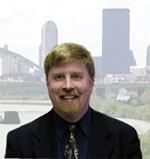 Several years ago, McGowan Institute for Regenerative Medicine faculty member Eric Beckman, PhD, George M. Bevier Professor of Engineering in the University of Pittsburgh Department of Chemical and Petroleum Engineering, and Michael Buckley, MD, oral and maxillofacial surgeon, invented a novel medical adhesive technology. The new adhesive—now known as TissuGlu®—was designed to meet a market demand for a strong, safe tissue adhesive to improve the wound closure process. The product positions tissues for optimal healing while minimizing fluid accumulation. To move the University of Pittsburgh-developed technology towards clinical use, Cohera Medical, Inc.® was formed, and the invention rights were licensed by the University to Cohera.
Several years ago, McGowan Institute for Regenerative Medicine faculty member Eric Beckman, PhD, George M. Bevier Professor of Engineering in the University of Pittsburgh Department of Chemical and Petroleum Engineering, and Michael Buckley, MD, oral and maxillofacial surgeon, invented a novel medical adhesive technology. The new adhesive—now known as TissuGlu®—was designed to meet a market demand for a strong, safe tissue adhesive to improve the wound closure process. The product positions tissues for optimal healing while minimizing fluid accumulation. To move the University of Pittsburgh-developed technology towards clinical use, Cohera Medical, Inc.® was formed, and the invention rights were licensed by the University to Cohera.
Cohera Medical, Inc., now a leading innovator and developer of absorbable surgical adhesives and sealants, announced recently that it has secured $17 million towards Series D financing through private investors. The milestone comes from raising an additional $7.3 million in the Company’s latest offering, in addition to the $9.7 million raised in 2012. The Company will use the funds to expand adoption in Germany and additional European markets for its TissuGlu Surgical Adhesive, an internal surgical adhesive for large flap surgeries that eliminates or reduces fluid accumulation and the need for post surgical drains allowing for more natural healing and potentially faster recovery.
Additionally, the funds raised will support the first No-Drain Clinical Study for TissuGlu in the United States, which was approved by the FDA late last year. Cohera also plans to begin human clinical trials in Europe for its Sylys™ Surgical Sealant, designed to help surgeons performing colorectal procedures reduce anastomotic leakage. Such leakage is considered the most serious complication of bowel repair, causing one third of mortalities occurring after colorectal surgery.
“Cohera Medical has assembled world-class plastic and reconstructive surgeons who are using TissuGlu on their patients for more natural healing and faster recovery. The innovative technology that has made TissuGlu so successful illustrates the potential impact that its Sylys product will have in the investor community, another first-of-its-kind product in a billion dollar industry,” John C. Kern, Founder and General Partner of Kern Whelan Capital, LLC, and Manager of Kern Medical IV.
“This funding milestone is instrumental, as we begin the No Drain Clinical Trial for TissuGlu in the United States and start human clinical trials of our Sylys product,” said Patrick Daly, President and CEO of Cohera Medical. “Our products have the potential to revolutionize how patients recover from many types of large flap procedures. From abdominoplasties and mastectomies to lymph node dissection in cancer patients and bowel procedures, our adhesive and sealant technologies will transform patient experiences.”
Currently, most patients who undergo abdominoplasty procedures and other large flap procedures require the insertion of drains to remove fluids that accumulate under the skin at the surgical site. In some cases, drainage is inadequate and the excess fluid accumulation (seroma) requires additional procedures for removal. The drains are often painful for the patient and can lead to infection and impact the recovery process.
TissuGlu adheres the tissue flap created during the procedure to the underlying tissue, helping to reduce the fluid that can accumulate in the space during healing and ultimately reducing the need for postoperative drains to remove the fluid. The ability to perform the procedure without drains would lead to a more comfortable recovery and a quicker return to normal activity for patients.
Cohera Medical received CE Marking approval for TissuGlu and began selling product to hospitals and surgeons in Germany in September 2011. An earlier no-drain study of 30 patients was successfully completed in Germany in July 2012. In the U.S., Cohera recently completed enrollment of a clinical trial for TissuGlu. TissuGlu has been used successfully in over 600 various surgical procedures by leading surgeons.
McGowan Institute for Regenerative Medicine Affiliated Faculty Member Studies Cerebral Aneurysms
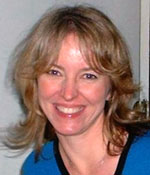 McGowan Institute for Regenerative Medicine affiliated faculty member Anne Robertson, PhD, has been awarded a $423,852 R21 grant from the National Institute of Health for a research program entitled “The link between hemodynamics and wall structure in cerebral aneurysms.” Her research team includes Juan Cebral, PhD of George Mason University, Khaled Abdel Aziz, MD of Allegheny General Hospital, and McGowan Institute for Regenerative Medicine affiliated faculty member Simon Watkins, PhD, founder and director of the Center for Biologic Imaging, director of the Graduate Program, and a professor (with tenure) within the Department of Cell Biology and Physiology, University of Pittsburgh, and a member of the University of Pittsburgh Cancer Institute (UPCI).
McGowan Institute for Regenerative Medicine affiliated faculty member Anne Robertson, PhD, has been awarded a $423,852 R21 grant from the National Institute of Health for a research program entitled “The link between hemodynamics and wall structure in cerebral aneurysms.” Her research team includes Juan Cebral, PhD of George Mason University, Khaled Abdel Aziz, MD of Allegheny General Hospital, and McGowan Institute for Regenerative Medicine affiliated faculty member Simon Watkins, PhD, founder and director of the Center for Biologic Imaging, director of the Graduate Program, and a professor (with tenure) within the Department of Cell Biology and Physiology, University of Pittsburgh, and a member of the University of Pittsburgh Cancer Institute (UPCI).
Cerebral aneurysms are pathological enlargements of the walls of cerebral arteries and estimated to exist in 5-8% of the adult population. Their spontaneous rupture is responsible for 80% of subarachnoid hemorrhagic strokes, a devastating disease with high mortality and disability rates This multi-disciplinary team will use an integrated, multi-scale approach to determine the link between aneurysm blood flow, wall structure, and wall strength. The long-term objectives of the research team are to establish new pharmacological-based treatment methods for cerebral aneurysms and improve clinical treatments that function by altering flow in the aneurysm dome.
Dr. Robertson is an associate professor in the Department of Mechanical Engineering and Materials Science at the University of Pittsburgh Swanson School of Engineering. Dr. Robertson’s research interests are in continuum mechanics with particular emphasis on (i) Newtonian and non-Newtonian fluid dynamics, (ii) cerebral vascular disease, and (iii) constitutive modeling of soft biological tissues. She earned her BS in mechanical engineering from Cornell University and her MS and PhD in mechanical engineering from the University of California at Berkeley.
Mechanism to Halt Cancer Cell Growth Revealed Potential Cancer Therapy
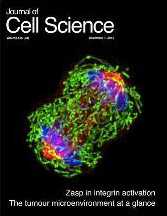 McGowan Institute for Regenerative Medicine affiliated faculty member Simon Watkins, PhD—founder and director of the Center for Biologic Imaging, director of the Graduate Program, and a professor (with tenure) within the Department of Cell Biology and Physiology, University of Pittsburgh, and a member of the University of Pittsburgh Cancer Institute (UPCI)—and UPCI researchers have uncovered a technique to halt the growth of cancer cells, a discovery that led them to a potential new anti-cancer therapy. When deprived of a key protein, some cancer cells are unable to properly divide, a finding described recently. This research is supported in part by a grant from the National Institutes of Health.
McGowan Institute for Regenerative Medicine affiliated faculty member Simon Watkins, PhD—founder and director of the Center for Biologic Imaging, director of the Graduate Program, and a professor (with tenure) within the Department of Cell Biology and Physiology, University of Pittsburgh, and a member of the University of Pittsburgh Cancer Institute (UPCI)—and UPCI researchers have uncovered a technique to halt the growth of cancer cells, a discovery that led them to a potential new anti-cancer therapy. When deprived of a key protein, some cancer cells are unable to properly divide, a finding described recently. This research is supported in part by a grant from the National Institutes of Health.
“This is the first time anyone has explained how altering this protein at a key stage in cell reproduction can stop cancer growth,” said Bennett Van Houten, PhD, the Richard M. Cyert Professor of Molecular Oncology, Pitt School of Medicine, leader of UPCI’s Molecular and Cell Biology Program, and senior author of the research paper. “Our hope is that this discovery will spur the development of a new type of cancer drug that targets this process and could work synergistically with existing drugs.”
All cells have a network of mitochondria, which are tiny structures inside cells that are essential for energy production and metabolism. Dynamin-related protein 1 (Drp1) helps mitochondria undergo fission, a process by which they split themselves into two new mitochondria.
In breast or lung cancer cells made to be deficient in Drp1, the researchers observed a huge network of highly fused mitochondria. These cancer cells appear to have stalled during a stage in cell division called G2/M. Unable to divide into new cells, the cancer growth stops. Those cells that do try to divide literally tear their chromosomes apart, causing more stress for the cell.
The cover of the Journal of Cell Science (pictured) includes a colorful image of a breast cancer cell deficient in Drp1 that is stuck during the process of separating its chromosomes into two identical sets to be divided among two new cells. Lead author Wei Qian, PhD, a postdoctoral fellow in Dr. Van Houten’s laboratory, captured the image using a confocal microscope at Pitt’s Center for Biologic Imaging run by Dr. Watkins, a co-author of this study.
“Once we revealed this process for halting cancer cell growth by knocking out Drp1, we began looking into existing compounds that might utilize a similar mechanism,” said Dr. Van Houten. “Now that we know affecting mitochondria in this manner inhibits cell growth, we could target drugs to this biological process to treat cancer.”
The researchers found a compound called Mdivi-1 that makes cancer cells behave much the way they do when deficient in Drp-1. When used in combination with cisplatin, a drug already used to treat many solid cancers, rapid cell death can be induced in a wide range of cancer cells. This means that Mdivi-1 makes cisplatin work better.
Mdivi-1 is being tested in cancer cells in a laboratory setting. Those tests show that, while the compound acts as though it is depriving cancer cells of Drp1, it is actually using a different mechanism.
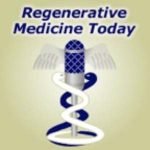 Regenerative Medicine Podcast Update
Regenerative Medicine Podcast Update
The Regenerative Medicine Podcasts remain a popular web destination. Informative and entertaining, these are the most recent interviews:
#119 –– Dr. Geoff Gurtner is a professor of surgery in the division of plastic surgery at Stanford University Medical Center. Dr. Gurtner discusses his research in scar mitigation and wound healing.
#120 –– Dr. Scott Nyberg is a professor of surgery and the director of the Artificial Liver Program at the Mayo Clinic. Dr. Nyberg discusses his research in the treatment of liver failure and liver disease.
Visit www.regenerativemedicinetoday.com to keep abreast of the new interviews.
